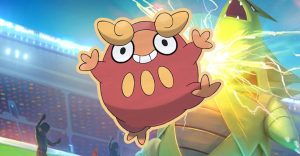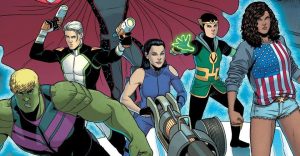Why Fallout Games Use Bottlecaps For Money

The world of Bethesda’s Falloutfranchise is full of imagery that has now become iconic to fans of the series. From Nuka-Cola to power armor, these gameplay features make recurring appearances throughout almost every Fallout game, helping give the franchise a unique and recognizable identity. One of the most common staples of the series is the use of bottlecaps – regularly shortened in-game as caps – as the standard currency within Fallout‘s post-apocalyptic world. Players may be surprised to learn of the extensive lore and history behind Fallout‘s use of bottlecaps as money.
Throughout the course of each Fallout game, players are given the opportunity to scavenge caps from characters or locations across the map. They can even be obtained by drinking Nuka-Cola sodas from the player’s inventory. Certain NPCs will give caps as a reward for completed quests or assignments. Caps can then be used to barter with merchants for other items – or players can sell their unneeded junk in exchange for more caps. Almost every game in the series features caps as the most common currency, though there are exceptions to this, such as Fallout 2 and Fallout Tactics.
Other forms of currency still exist within Fallout, though not all are as valuable or universally recognized as caps. Pre-War money, while widely considered to be mostly useless, can still be used in automated vending machines from before the Great War. NCR dollars, the currency of the New California Republic, is used primarily along the West Coast – and Legion money, made of scavenged silver and gold, is common used within the ranks of Caesar’s Legion in Fallout: New Vegas. The usage of these currencies, however, is largely limited to specific regions or factions within Fallout. Bottlecaps, on the other hand, are recognized on a much larger scale.
What Makes Fallout’s Bottlecaps So Valuable

Within the Fallout universe, caps first emerged as a form of currency in 2093, when merchants of the Hub – a large trading city located in Fallout‘s fictional city of New California – decided to adopt them in the post-nuclear world. This was largely on account of their relative scarcity. The technology to manufacture and paint bottlecaps had been largely lost in the time following Fallout‘s Great War, so counterfeiting efforts were limited; and despite their widespread presence, their finite numbers protected caps against inflation. Most importantly, however, bottlecaps in Fallout are backed by the water – a rare and precious commodity in a landscape ravaged by nuclear devastation. This backing helped give merchants a means to back caps as a common unit of exchange, and the use of them spread rapidly from the West Coast to the East.
Nuka-Cola bottlecaps aren’t the only ones available to find across Fallout‘s wasteland, however, and many variants exist for players to find. Counterfeit Nuka-Cola caps, while not particularly common, make an appearance in Fallout: New Vegas – players can venture into a cap counterfeiting shack and find the counterfeits scattered across the table there. Fallout: New Vegas also features Sunset Sarsaparilla as a slightly less common variant within the Mojave Wasteland. Additionally, players may stumble across rare Sunset Sarsaparilla star bottle caps, which can be exchanged for a unique item if at least 50 are collected across the course of the game. Even Fallout 4 allows non-standard caps to be used for bartering, and players can collect them off of beer or other malt beverages. Caps were once again used as common currency in Fallout 76, making it seem likely that they’ll remain a large part of future Falloutgames moving forward.
About The Author


















